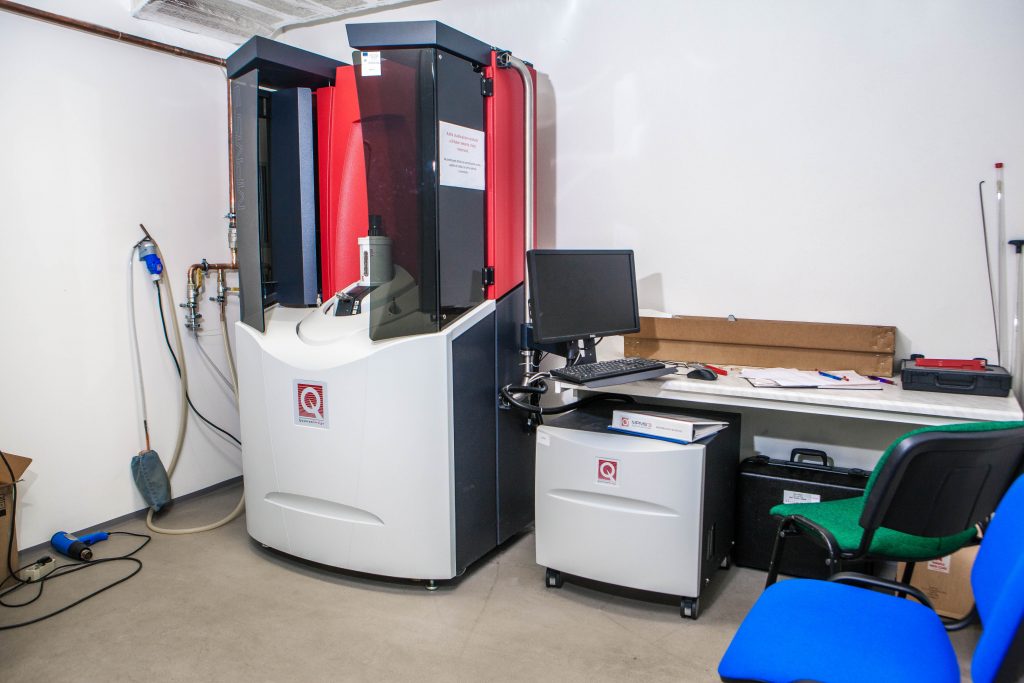Facilities
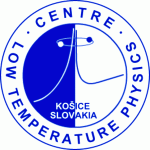
Experimental facilities available in our Centre:
3He-4He Dilution Refrigerator
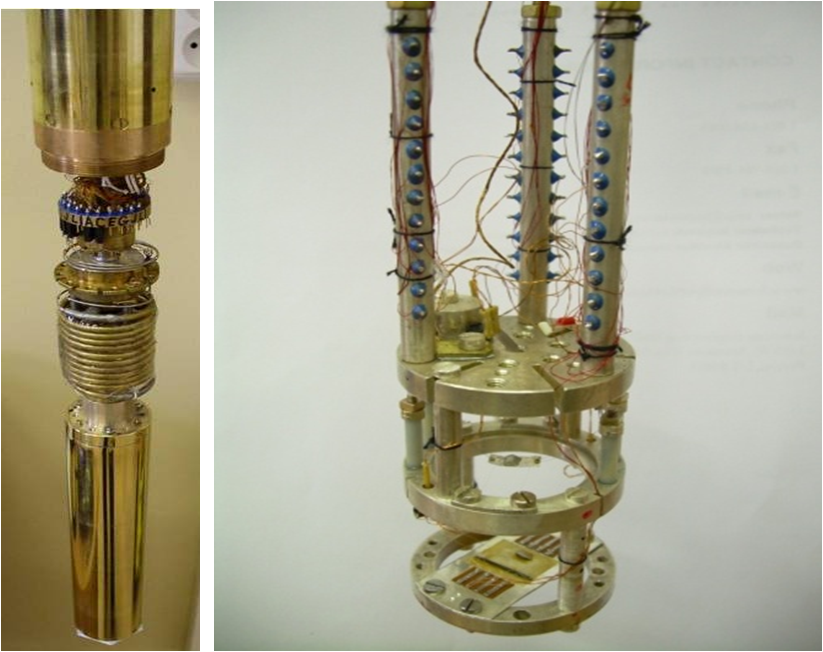
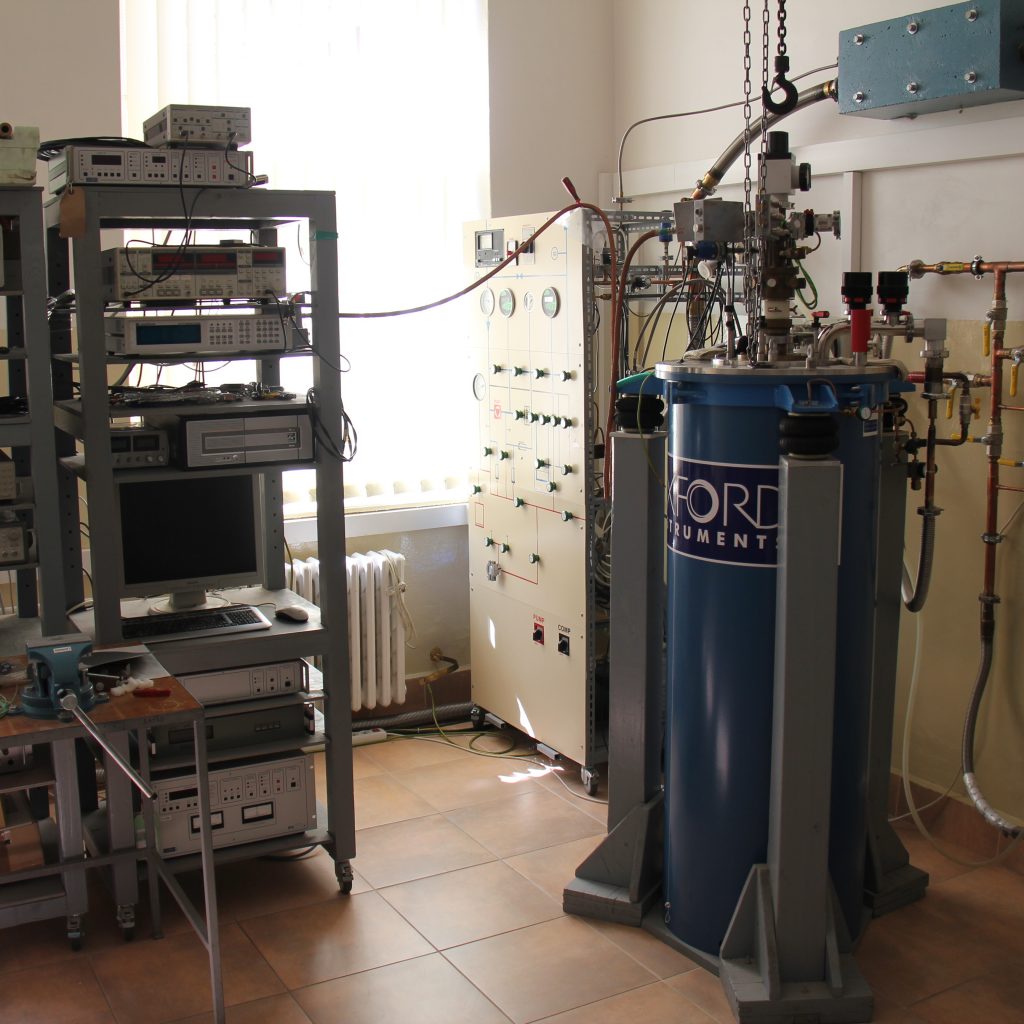
“Home made” mini dilution refrigerator. Minimum temperature of system is 28 mK with cooling power of 20 μW. Possibility to measure electrical resistivity and heat capacity (relaxation method) in temperature range 0.03 – 300 K. Maximum applied magnetic field is 10 T. There is also possibility to install DAC.
Contact person: doc. RNDr. Slavomír Gabáni PhD. gabani@saske.sk
High Pressure Measurements
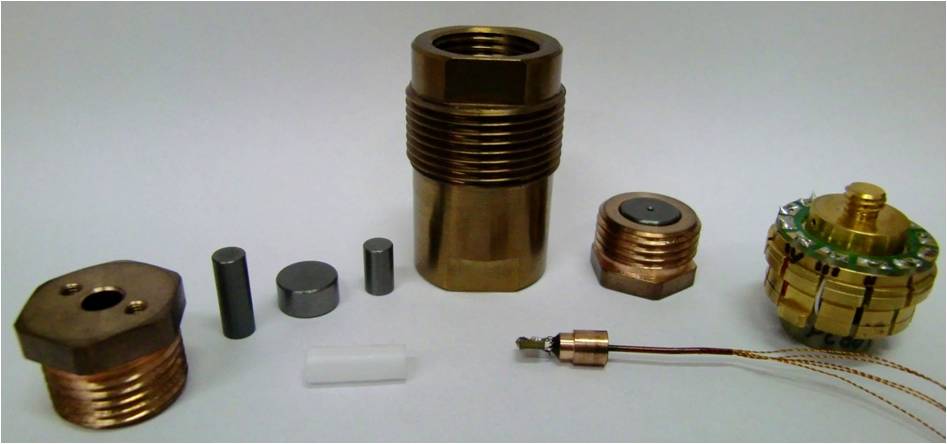
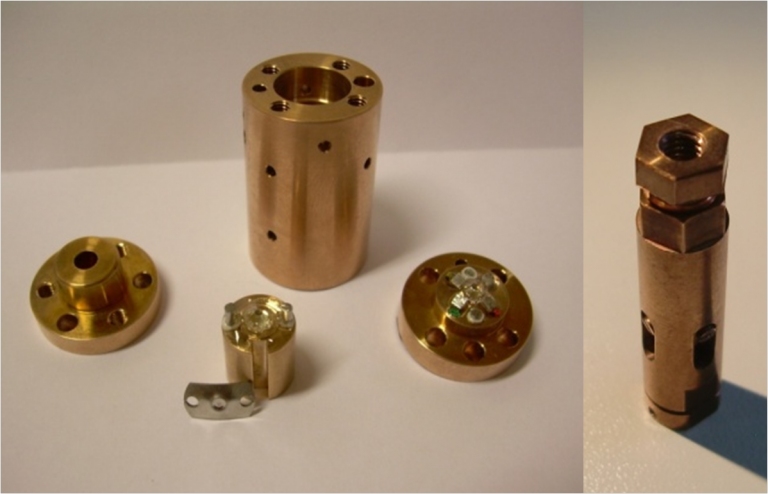
The Laboratory of extreme conditions has been formed around 2008, after successful construction of home made mini-dilution refrigerator and construction of our first diamond anvil cell. Combination of very low temperatures and high pressures allowed us to study materials under extreme conditions. Pressure is considered as clean and controlled tuning parameter of the physical properties of materials by changing inter-atomic spacing. Now we are operating several DACs and also piston-cylinder pressure cell, where it is possible to perform measurements of electrical resistivity susceptibility and magnetization.
Piston cylinder pressure cell:
- electrical resistivity, susceptibility measurements
- maximum applied pressure about 3 GPa
Diamond anvil pressure cell:
- electrical resistivity, susceptibility measurements
- maximum applied pressure about 10 GPa
Diamond anvil pressure cell for MPMS:
- magnetization measurements
- maximum applied pressure about 10 GPa Contact person: doc. RNDr. Slavomír Gabáni PhD. gabani@saske.sk
3He refrigerator with AC micro-calorimetry and with Hall-probe magnetometry
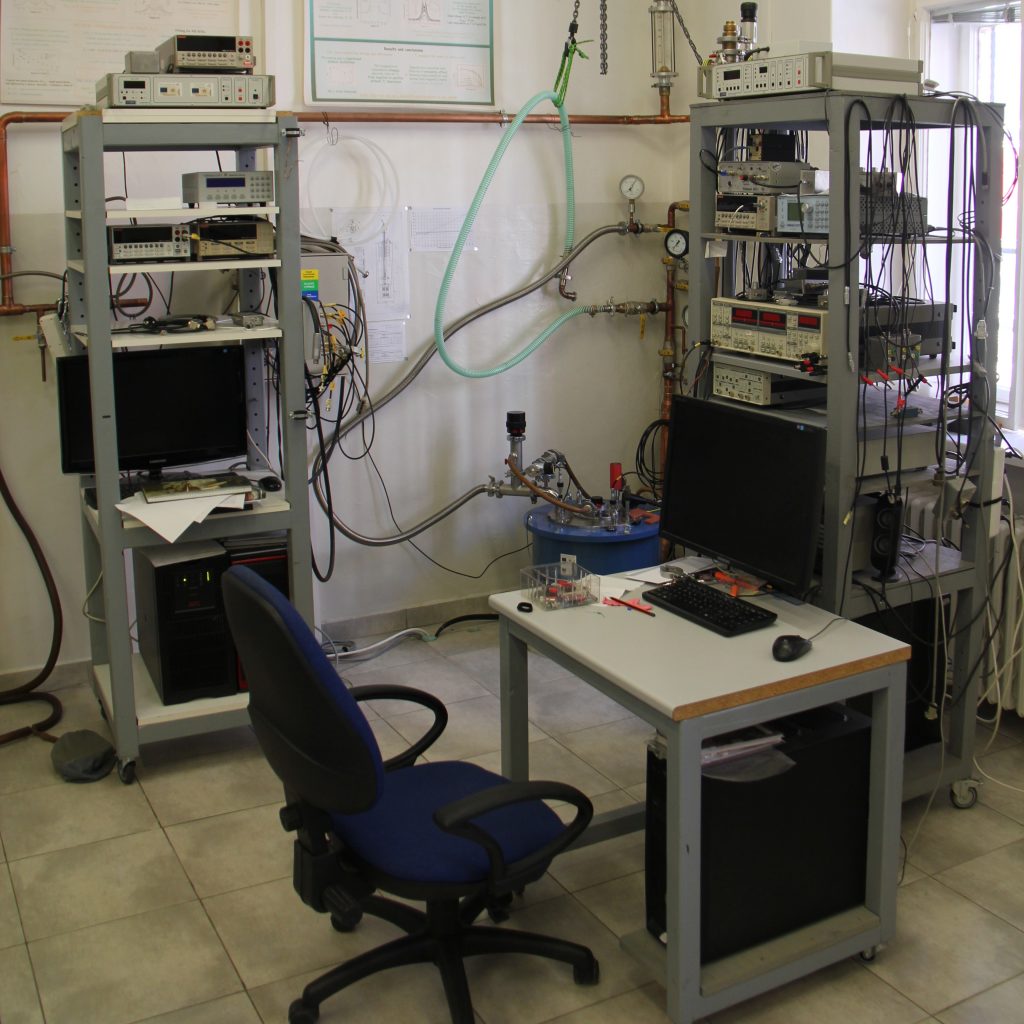
3He refrigerator with AC micro-calorimetry and with Hall-probe magnetometry
Two 3He refrigerators made by Oxford with 10 T (axial) and another with planar 8 T superconducting magnets. Unique AC micro-calorimeter allows to measure specific heat of microscopic samples in temperature range from 400 mK up to 300 K. Ac-calorimetry may be used in contact-less mode – thermo-couple serves as a thermometer and a sample holder at the same time and light emitting diode as a contact-less source of heat, or using Cernox chip, when the sample is attached to Cernox thermometer that serves as a thermometer and as a heater at the same time.
Setup allows also transport measurements.
Micro Hall-probe magnetometry using array of 7 Hall probes in line, with active area 10 µm x 10 µm each, spaced by 25-35 µm allows to measure local magnetic properties.
2 cryostats with vertical magnets
– AC calorimetry, transport – T = 1.5K–100 K, H = 0-8T
point-contact spectroscopy – T = 1.5–100K, H = 0-8T
Contact person: RNDr. Jozef Kačmarčík, PhD. kacmarci@saske.sk
Scanning Tunneling Microscope (STM)
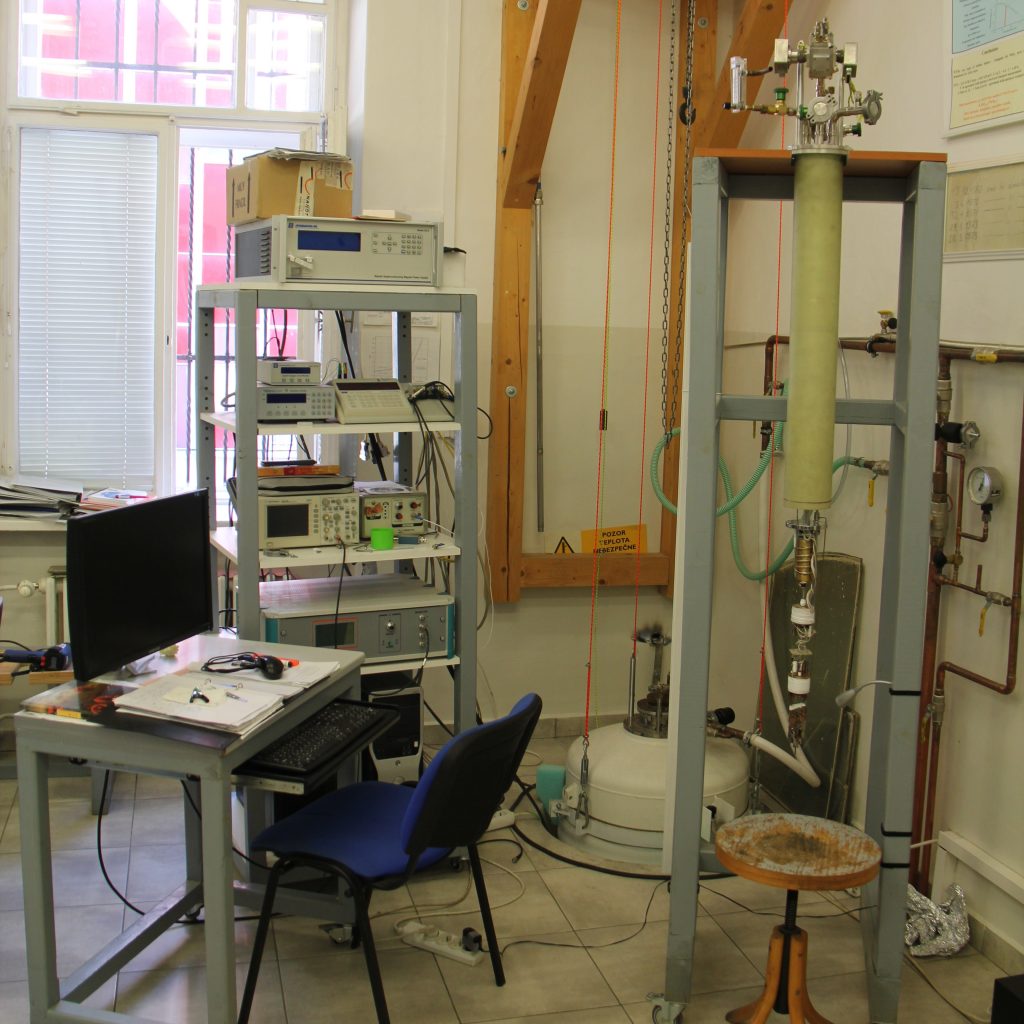
This STM is a custom made, unique experimental facility with atomic resolution operating in temperature range down to 300 mK (cryo-magnetic system Janis 3He-SSV-8MT) and in magnetic field up to 8 T.
Contact person: Mgr. Pavol Szabó, CSc. pszabo@saske.sk
Microcontact Spectroskopy
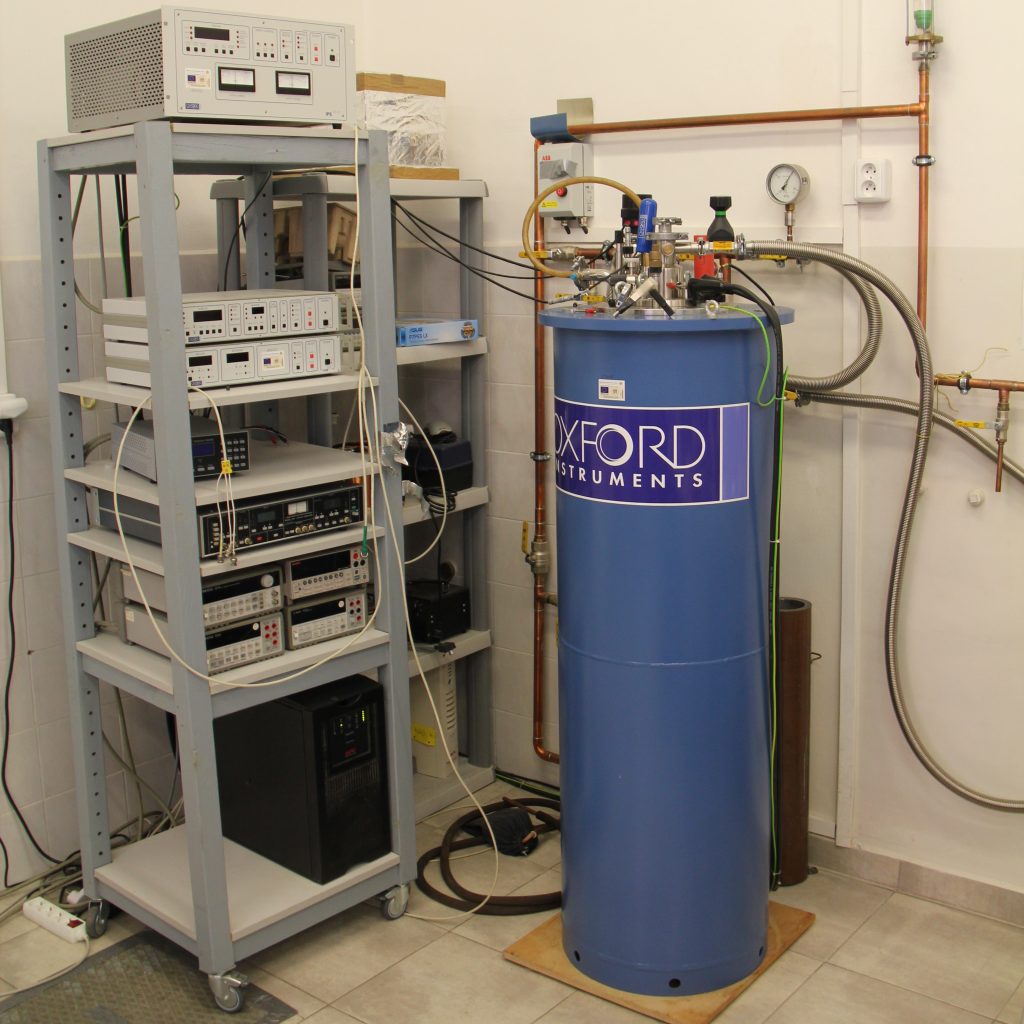
Point Contact Spectroscopy
The home made point-contact set up is inserted into Oxford instruments VTI sysem, which enables point-contact (PC) spectroscopy measurements in the temperature range down to T = 1.5 K and magnetic fields up to H = 8 Tesla. The differential srew mechanism of the PC tip holder allows for fine movement in horizontal and vertical directions. The standard lock-in technique is used to measure the PC spectra. The temperatures are stabilized with Cryocon temperature controller.
Contact person: Mgr. Pavol Szabo CSc. pszabo@saske.sk
Scanning Hall Probe Microscopy
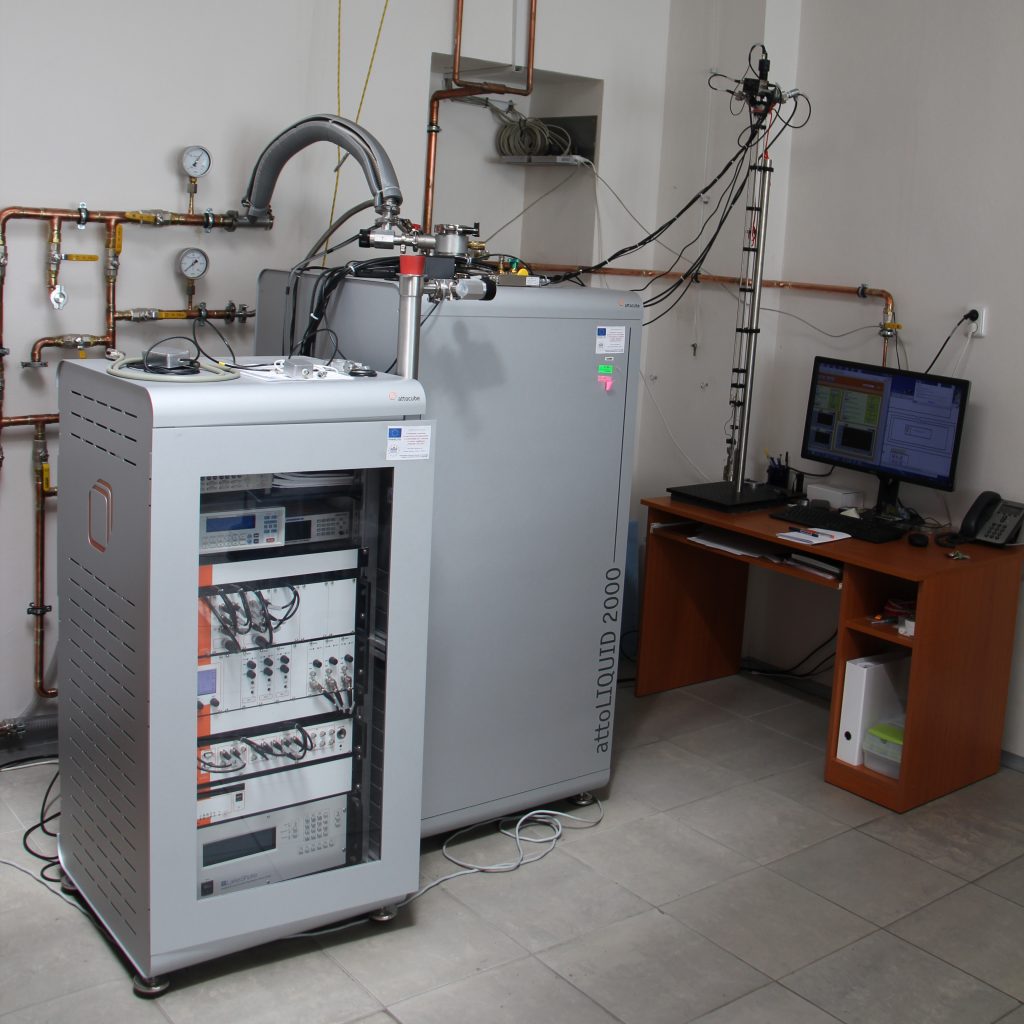
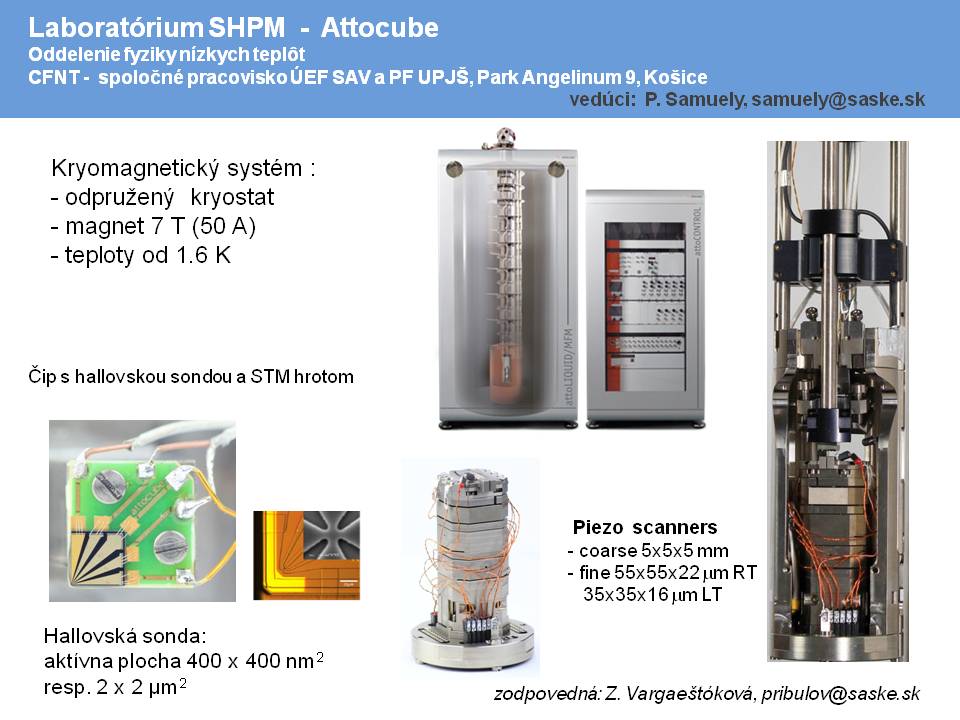
Low temperature nanolaboratory of materials magnetic properties
Contact person:
RNDr. Z. Vargaeštoková, PhD., Institute of experimental physics SAS, pribulov@saske.sk, phone +421 55 7922303
:Scanning Hall probe microscope – SHPM is a combination of miniature Hall probes and scannning tunelling microscope (STM) from the company attocube. Sensor aproach is controlled by closed loop STM. Subsequently, local magnetisation measurements of a sample are obtained during scanning the sample underneath the Hall sensor in a close proximity of the sample surface (the distance between the sensor and the sample is few hundreds of nanometers). The movement of the sample is governed by a system of piezo-stacks which enable both coarse and fine positioning in all three directions. Scanning is possible in an area of 30×30 mm2, the coarse positioners allow displacement of 5 mm. The Hall sensor is made of semiconducting GaAs heterostructure. The space resolution of measured characteristics is limited by the dimensions of the probe. Larger Hall-probes with the side of 2 mm are available for larger magnetic structures and submicron probe with the side of 400 nm is at disposal for mapping of fine magnetic structures. The microscope is inserted in a cryomagnetic system with the 4He cryostat, VTI and superconducting magnet. The lowest operational temperature is 1.8 K and highest magnetic field available is 7 T.
Research
The microscope enables noninvasive mapping of magnetic properties of superconductors and mangetic materials with unrivalled sensitivity. It performs local magnetisation measurements at very low temperatures and high magnetic fields. It is capable to visualize vortex distribution and pinning in pnictides, cuprates and other superconductors, to measure local field on magnetic nanoparticles, or to perform a research of bit patterned media, magnetic domains. etc.
Photo gallery:

(a) Irregular vortex structure on a surface of exotic superconductor SrRuO4 b) 3D view of (a). (c) SHPM image of BaFeO at 4.2K. The color scale spans 106 mT (dark to bright). [attocube application labs,2011]

Sketch of the senzor located above the magnetic sample surface
Ultra High Vacuum Scanning Tunneling Microscope
The laboratory houses a comprehensive device for the preparation and characterization of thin films and nanostructures in ultra-high vacuum and an integrated scanning tunneling microscope and atomic force microscope operating in ultra-high vacuum, at ultra-low temperatures and high magnetic fields.
Responsible person: Mgr. Pavol Szabó, CSc., IEF SAS Košice Mgr. Tomáš Samuely, PhD., ÚFV PF UPJŠ Košice
Device function:
The complex equipment from Specs consists of two interconnected vacuum chambers with a pressure of less than 10-10 mbar. In the preparation chamber there is: Special manipulator – 4 axes of movement with high accuracy – Linear movement in the direction x, y, z with the range Dx, Dy: +/- 12.5 mm, Dz: 900 mm – rotation ± 180 ° – – – electron heating beam up to 1000 ° C and N2 cooling – separate position for direct electric heating
Electron evaporator – 4-chamber electron evaporator with NW35CF (2.75 ″) flange, two fixed holders and two holders with the possibility of movement, the possibility of simultaneously steaming up to 4 different materials from rods or containers
High temperature evaporator For evaporating materials with low saturated vapor pressure
Silicon microbalance with accessories – microbalance for determining the thickness of the vapor deposited layer
Ion source Yttria oxide coated iridium fiber ion source with long life for dedusting impurities from the surface of samples in ultra-high vacuum
RHEED
Reflected high-energy electron diffraction to characterize the growth of thin films and their structure
Analyzer
for XPS, UPS, AES, SAM, ISS and LEIS Multi-channel detector with extended dynamic range CEM
X-ray source with accessories
For X-ray Photoelectron Spectroscopy for chemical analysis of surfaces
Four – pole mass spectrometer for the analysis of residual gases in a vacuum during evaporation
In the STM chamber there is:
– Low temperature scanning tunneling microscope operating under ultra-high vacuum (UHV STM) conditions in high magnetic fields and ultra-low temperatures
– UHV STM system, operating at low temperatures in the temperature range 1K – 300 K with cooling based on Joule-Thomson refrigerator with modular These heads, allowing the use of various sensors such as qPlus, Hummingbird sensor, STM, allowing simultaneous AFM / STM measurements in magnetic fields higher than 2 T at temperatures lower than 4 K. – Cryostat with nitrogen and 4He cooling – Superconducting magnet enabling SPM measurements in magnetic fields min. to 3 Tesla in a direction perpendicular to the sample surface – Control electronics from Nanonis.
Separate chamber with inert atmosphere – With the possibility of direct connection to the vacuum chamber and sample transfer
Areas of application: – Atomic resolution topography – Extreme resolution conductivity electron spectroscopy – In-situ preparation and characterization of thin films and nanostructures – Manipulation with individual atoms and molecules
Mgr.Tomáš Samuely PhD. tomas.samuely@pjs.sk
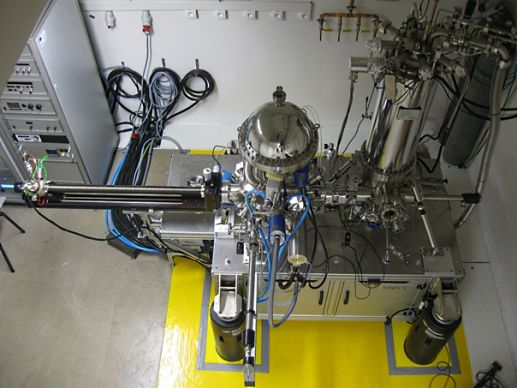
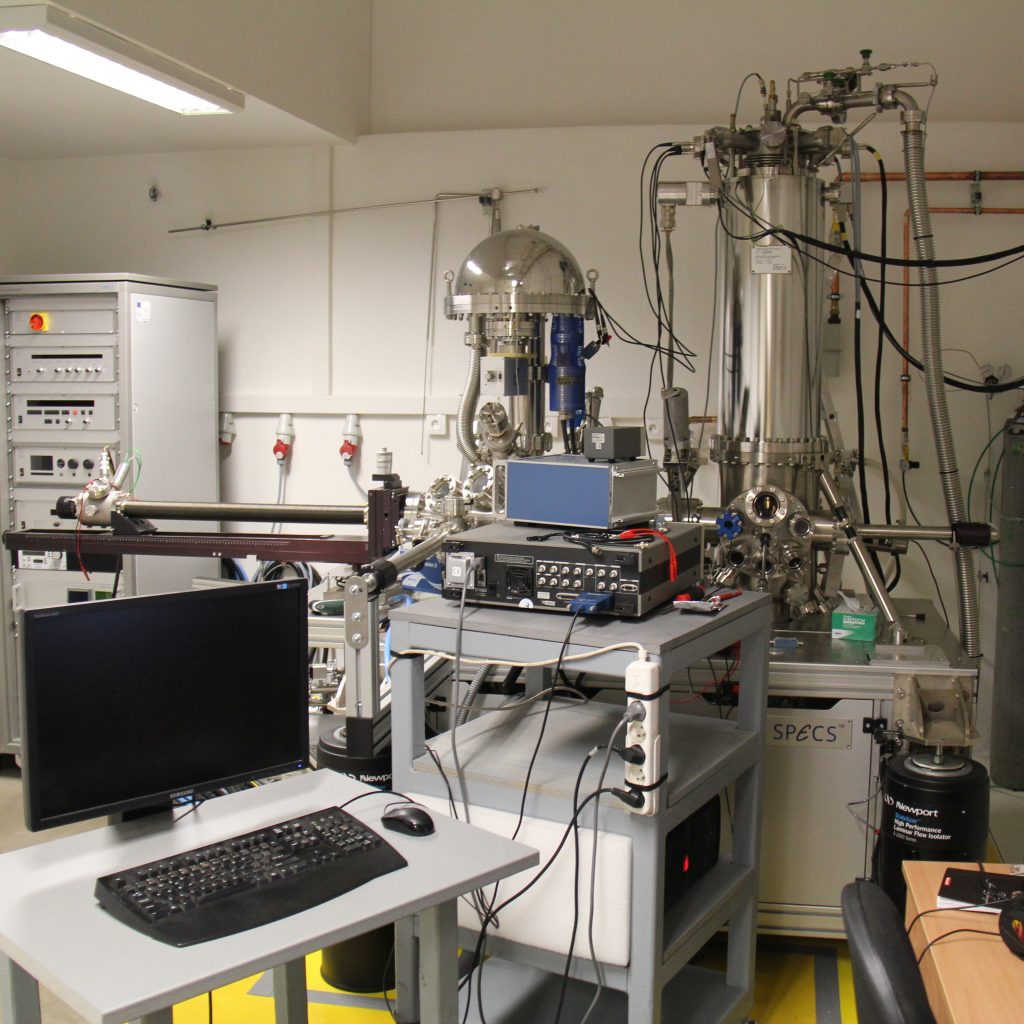
Top Loading 3He-4He Dilution Refrigerator
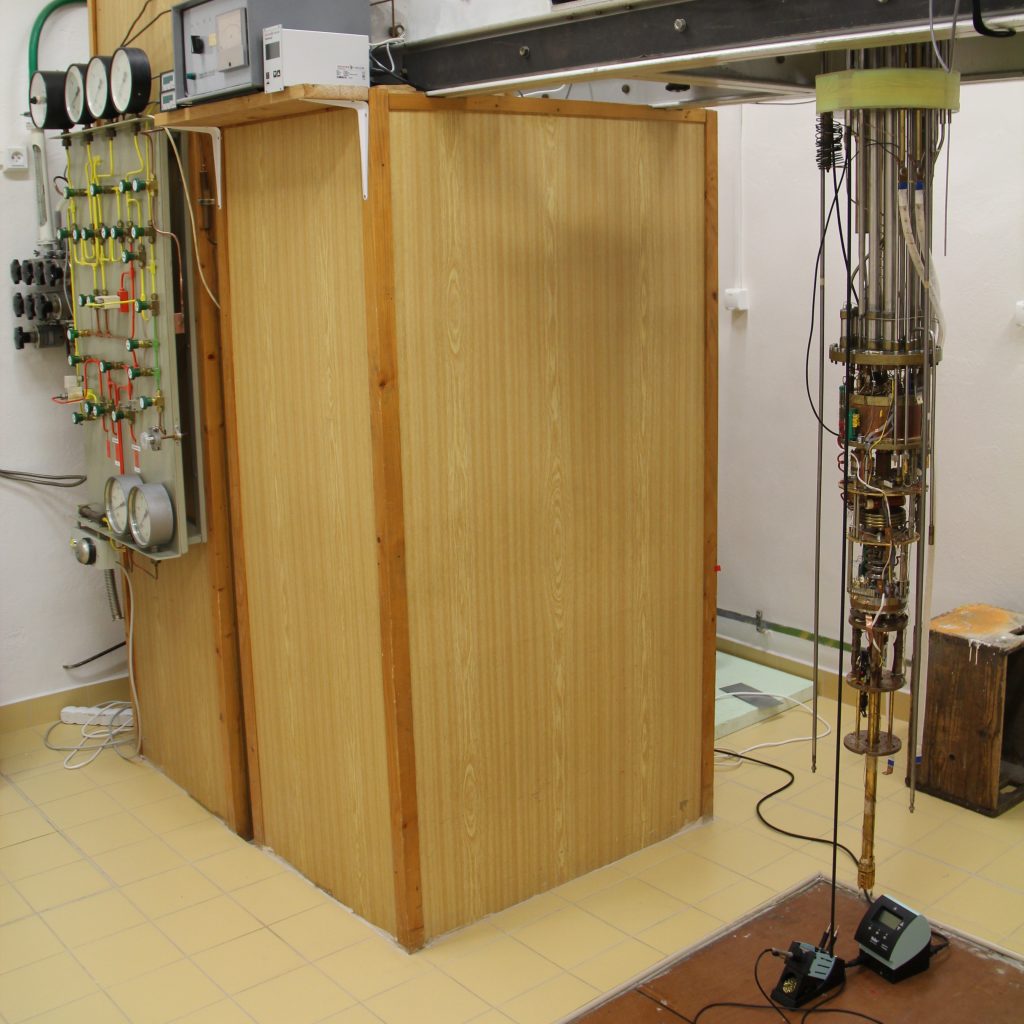
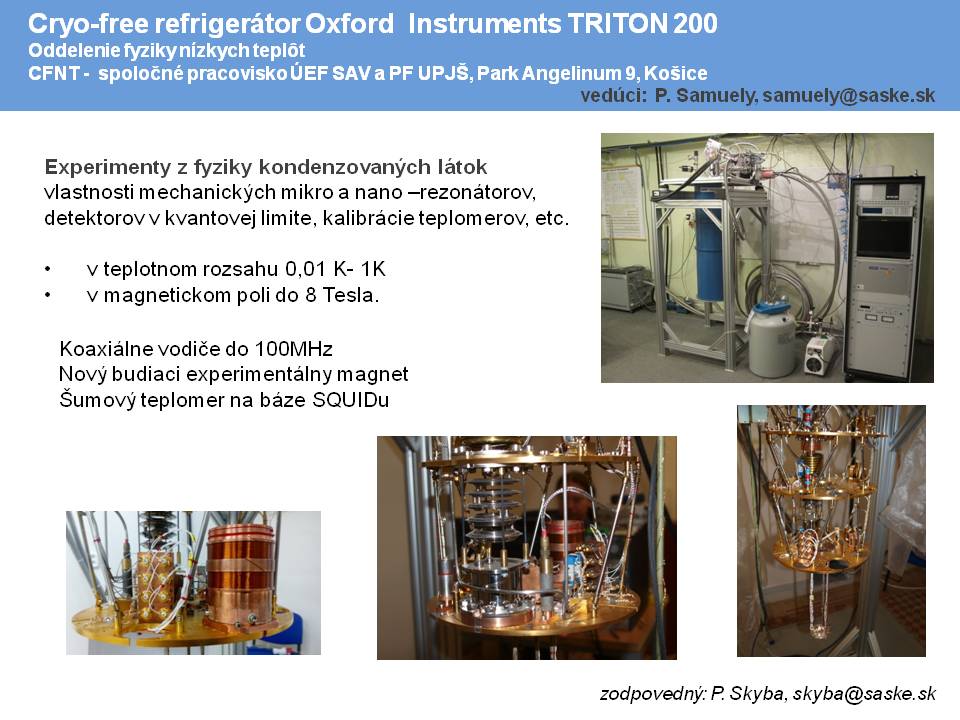
The He-4He top loading refrigerator manufactured by Oxford Instruments is used to cool samples down to millikelvin ranges. The measurement techniques used include thermal and electrical conductivity, microcontact tunneling spectroscopy, specific heat measurement and alternating magnetic susceptibility. The temperature range is from 50 mK to 3 K. The applied magnetic fields are up to 9 Tesla.
The Oxford Instruments IPS-120 power supply, Lakeshore 370AC precision bridge, Oy AVS-47 precision bridge, NF Corporation LI 5640 lock-in amplifier, Keithley 2178A nanovoltmeter and Keithley 6221 precision power supply are available for measuring physical quantities.
Contact person: prof. Martin Orendáč, PhD, martin.orendac@upjs.sk
Nuclear Adiabatic Demagnetisation
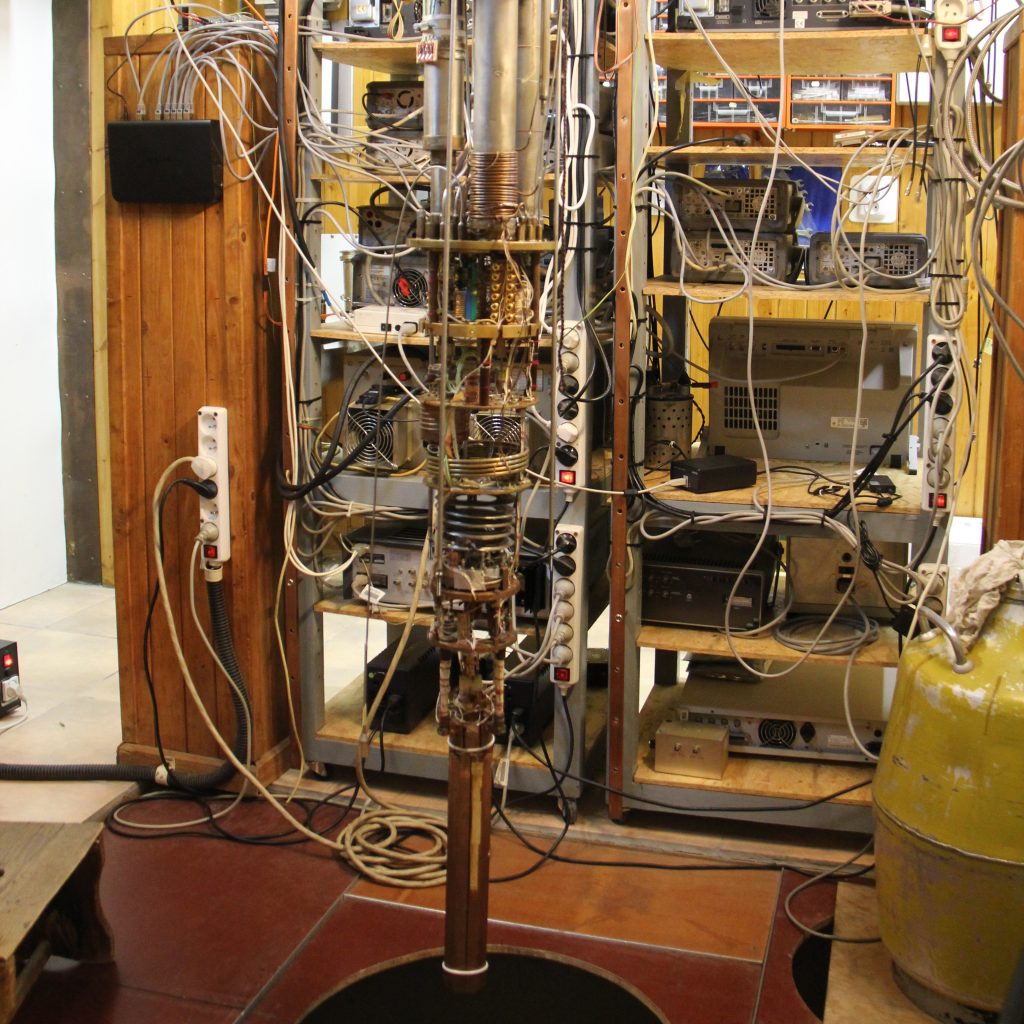
Nuclear Adiabatic Demagnetisation:
– unique home-made experimental facility, capable to cool helium 3 sample down to 200 uK, only a few similar laboratories exist in world
– used for experiments with superfluid phases of He3, which is a perfect model system for experiments related to cosmology, astrophysics and particle/nuclear physics and other fields of physics
– it is possible to create and study the quantum turbulence in superfluid He3 by different types of mechanical resonators (e.g. vibrating wires, quartz tuning forks, etc.)
– nuclei of He3 atoms have non-zero magnetic moments therefore the superfluid phases of He3 exhibit peculiar magnetic properties. To examine these we have implemented various pulse and cw NMR techniques.
Contact person: RNDr. Pter Skyba, DrSc. skyba@saske.sk
Helium Liquefier
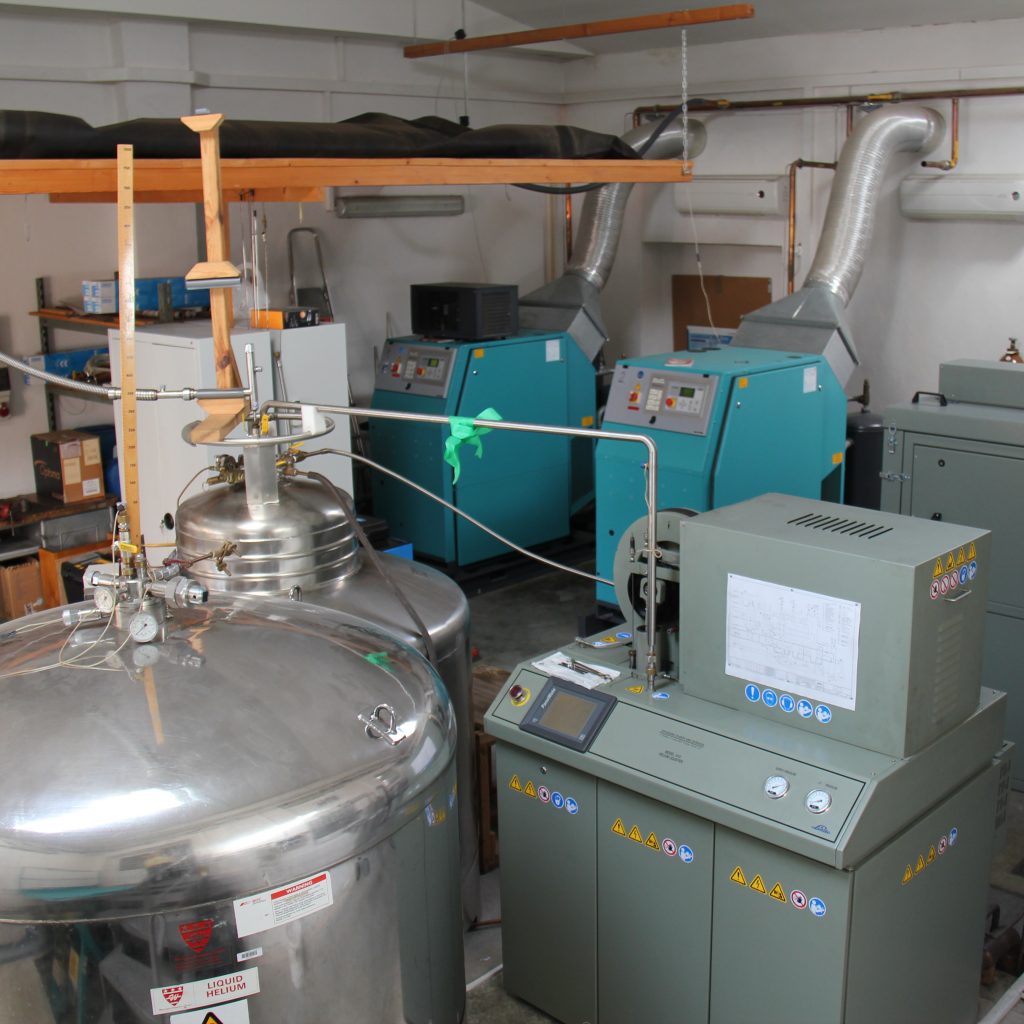
[CTI 1410 helium liquefier with infrastructure (RSX compressor, helium dewars).] [CTI 1410 helium liquefier with infrastructure (RSX compressor, helium dewars).]
Person responsible for the laboratory, contact, financing
Contact person: RNDr. Oleksandr Onufriienko, PhD. Onufriienko@saske.sk, tel. +421 55 7922307.
It was built within the one-off financial support of the Ministry of Finance of the Slovak Republic to support infrastructure in 2006 and retrofitted from the Structural Funds project “Extreme – Completion of the Center for Advanced Physical Studies of Materials in Extreme Conditions” (EU ERDF European Regional Development Fund, Grant No. ITMS 26220120047).
The cryogenic laboratory is located in the premises of the Center for Low Temperature Physics of the Institute of Physical Sciences, Faculty of Science, UPJŠ in Košice and the Institute of Experimental Physics of the Slovak Academy of Sciences, Park Angelinum 9, 04154 Košice
Experimental laboratory equipment
The laboratory has the following equipment: CTI 1410 helium liquefier from Linde BOC Process Plants, Inc. with a capacity of 45 l / h. LHe during LN2 supercooling and infrastructure (helium RSX compressor, stable 1000 liter helium dewar vessel, transport helium dewar vessels 450, 250, 120, 100, 30 and 25 liters).
Compression compressors G15.1 – 7.5-5
from Bauer Kompressoren GmbH with a capacity of 2 × 15.6 m3 and infrastructure (2xballon 6.6 m3 for capturing evaporated helium, compressed helium gas tank with a volume of 11.425 m3 and a pressure of up to 150 bar).
Air compressor CLD-270 with air dryer from Boge.
Cooling unit WTE-S2-80 from the company JDK with cooling capacity up to 80 kw.
Liquid nitrogen tank
from LindeLiquid nitrogen tank from Linde with a capacity of 10,000 liters with infrastructure (transport dewar containers for liquid nitrogen with a volume of 120 and 35 liters)
Helium leak detector 2 x Adixen ASM 142
Offer measurements of the professional public
Liquid helium, liquid nitrogen and leak detection on vacuum or pressure equipment.
Photo gallery
[CTI 1410 helium liquefier with infrastructure (RSX compressor, helium dewars).]
Dry Refrigerator
Triton 200
Dry Refrigerator:
-1st “dry” refrigerator in our centre (it does not need liquid helium for its operation).
-allows to cool samples down to 10 mK in high magnetic fields (up to 8 Tesla)
– it is equipped with SQUID noise thermometer, therefore it is possible to calibrate thermometers in the temperature range from 10 mK up to 1 K
– used mainly for solid state physics experiments, e.g. heat capacity, AC micro-calorimetry, electrical resistivity
– one of our goals is to study the intriguing physical properties of various types of micro- and nano-resonators in vacuum and high magnetic fields at temperatures below 1 K
– we plan to broaden experimental capabili below 1 mK by adding our custom made plug-in nuclear stage in near future
Contact person: RNDr. Peter Skyba DrSc, skyba@saske.sk

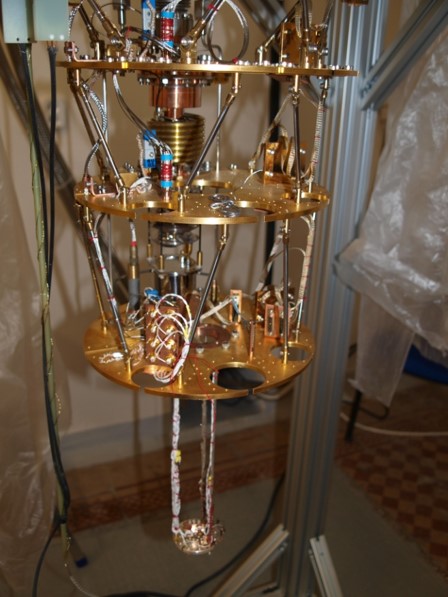
PPMS
In September 2006, they were installed in a new joint laboratory of IEP SAS and PF UPJŠ apparatus PPMS and MPMS from Quantum Desing. PPMS willallow measurements of thermodynamic and transport properties in magnetic fields up to 9 T up to a temperature of 350 mK and MPMS will allow DC and AC magnetic measurements in fields up to 5 T and in very low fields and up to 0.45 K. PPMS
PPMS (Physical propert measurement system) Equipment for automated measurement of physical properties in temperature range 350 mK-350 Kin magnetic field up to 9T Heat capacity, el. and thermal transport magnetometer Temperature Accuracy: 0.5 % @ 0 T Sample size: 1 to 500 mg 20 mg typical Heat Capacity Range: 1mJ/K – 100mJ/K Resolution: 10 nJ/K @ 2K Electrical resistivity, Hall Voltage Noise: 0.5 nV/Hz @ 1 kHz Voltage sensitivity: 1nV Current Range: 10 mA to 2 A (200 mA continous) Frequency Range: 1Hz to 1 kHz
Contact person: RNDr. Gabriel Pristáš PhD. gabriel.pristas@gmail.com
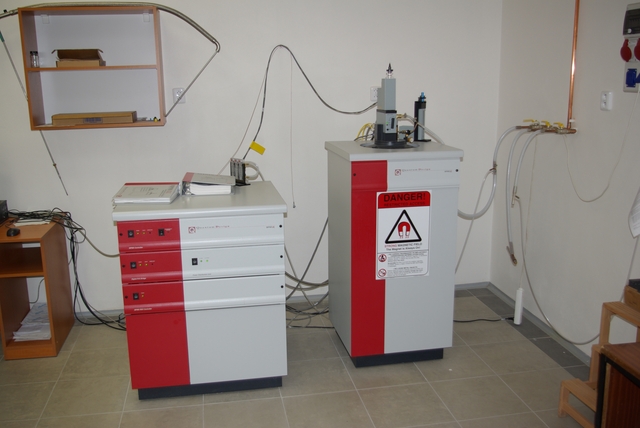
MPMS
MPMS (Magnetic properties measurement) XL-5
Maximum sample size: 9 mm Field uniformity: 0.01% over 4 cm Temperature range: 1.8 K – 400 K
MPMS OPTIONS: SQUID AC Susceptibility Measurement (*) – 0.1 Hz to 1 kHz sensivity: 2×10-8 emu at Ultra-Low Field Capability (*) ± 0.0G for the 5T to 7T magnets Reciprocatin Sample Option (RSO) – DC Magnetization absolute sensivity 1×10-8 emu at 2.500 Oe Continuous Low Temperature Control/Temerature Sweep Modde (CLTC) – Sweep rate: 0.001 – 10 K/min Helium insert for Temperatures down to 0.45 K (dc and ac measurement )
Contact person: RNDr. Gabriel Pristáš PhD. gabriel.pristas@gmail.com
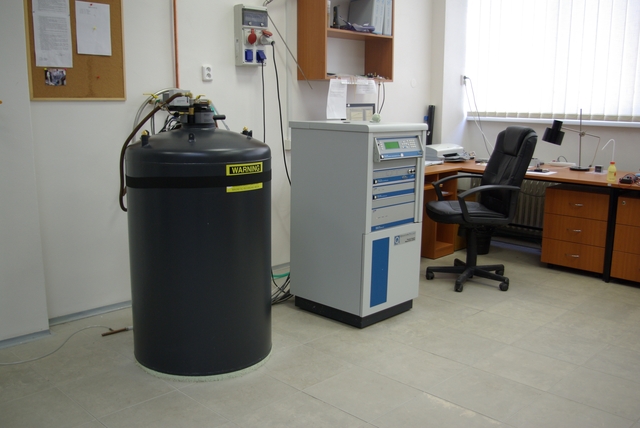
MPMS3
The SQUID magnetometer MPMS3 from Quantum Design is located in the Laboratory. The device is designed to study the magnetic properties of solid and liquid substances, in the temperature range 1.8 K – 400 K and in magnetic fields 0 – 7 T.
Measurement options / research:
dc and ac measurements
two measuring techniques using SQUID detection: vibrating magnetometer (VSM) and DC scan
Shielding of the magnetic field around the apparatus (including the magnetic field of the earth) – measurement in ultra-low magnetic fields
Selected specifications and advantages over older types of MPMS-XL:
Fast sample cooling up to 30 K / min
Fast change of magnetic field up to 700 Oe / sec
QuickSwitch magnet – almost instantaneous transition of the superconducting magnet from and to a persistent state
Sensitivity <1×10-8 emu for H <2500 Oe
Contact person: Erik Čižmár erik.cizmar@upjs.sk
